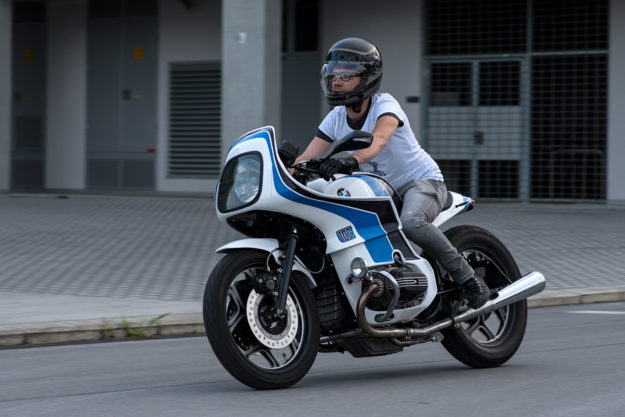
The BMW R100 RS made waves when it first launched. Sports tourers were a new concept, and the RS topped the charts with its wind tunnel-tested fairing.
These days, you’re more likely find an RS fairing in a plastic bin than on the streets. While it had a contemporary—almost futuristic—look back in the day, it’s the first thing that most builders rip off their old boxers.
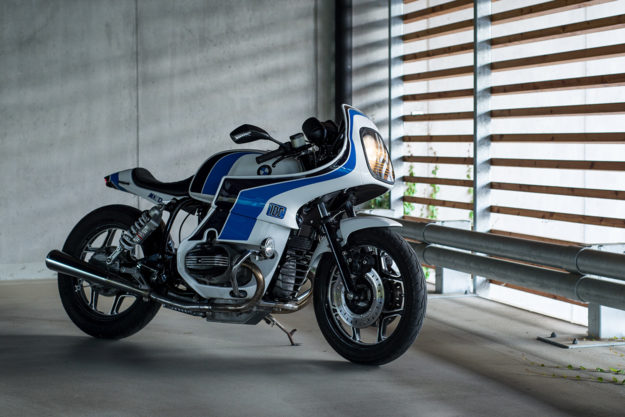
Unless they’re Luka Cimolini—a graphic designer who knows just how to massage the RS fairing into something more appealing. This is his second R100 ‘RC’ (‘Reise Custom’) build, and it’s even more intriguing than the first.
“Designing and building customs is my hobby, a way of spending free time,” Luka tells us. “I have a small oil-stained garage in Slovenia, where I make one custom per year.”
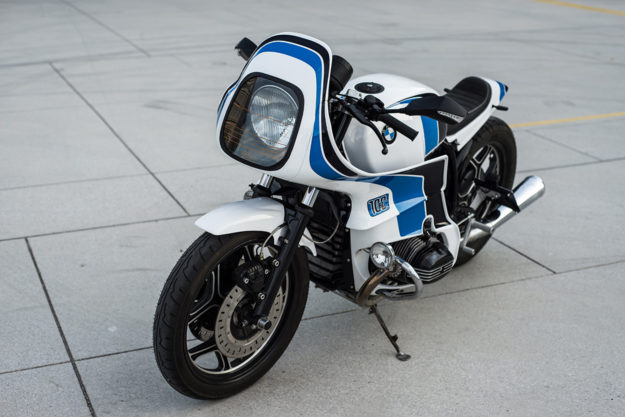
“Spending time in a garage, away from the computer, is a must nowadays. I try to hand-build as many parts as I can, because it delights me to see that I actually created something with my own hands.”
“After completing the bike, I test it during summer to make sure that everything works as it should, then sell it to get funds for the next project.”

Luka’s head was full of leftover ideas after his last RS build—which is exactly why he decided to take on another one. Only this time, he grabbed a newer model: an 87, complete with a single-sided ‘monolever’ swing arm.
It created the opportunity to create a super-sano rear end—with a discreet, custom-made subframe. The sharp tail section was hand-made in fiberglass, with the seat covered in Alcantara.
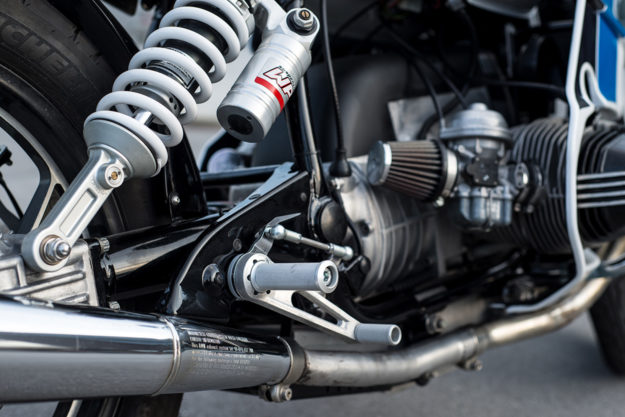
Luka relocated the battery to under the swing arm to clean things up further. He ditched the R100’s unsightly air box too—replacing it with K&N filters. The rear fender was cut and repurposed as a small inner guard, keeping muck off the engine.
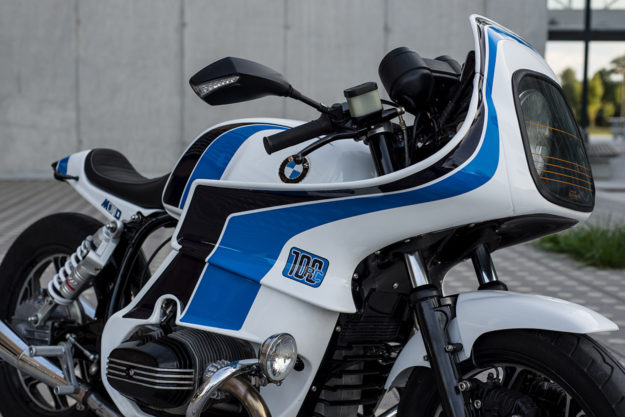
Naturally, the BMW’s most striking feature is the trimmed RS fairing. It’s a more radical chop than Luka’s last effort, that certainly won’t butter everyone’s toast—but we find it curiously appealing.
The stock headlight and dials are still present—but Luka’s ditched the original clock and voltmeter. In their place is a Koso Mini3 unit that handles both functions, as well as displaying ambient temperature.

Luka’s mounted it in a custom-made aluminum dash, along with the ignition, and a switch to activate a spotlight that’s mounted to the crash bars.
There’s a mix of original and upgraded parts throughout the bike, giving it a strong resto-mod vibe. “I was always against modern technology on classic bikes,” says Luka, “but there are so many advantages I just couldn’t resist anymore.”

So he’s installed LED’s all over: a tail light from Koso, tiny Highsider turn signals out back, and Magazi mirrors with integrated signals up front. Other upgrades include Tarozzi rear-sets on one-off mounting plates, and a fully adjustable WP Suspension rear shock.
Luka’s fettled the front end too. The forks have been dropped—capped off with a top triple clamp from a different Beemer, and a set of Magura clip-ons. The front fender is the stock unit, trimmed.
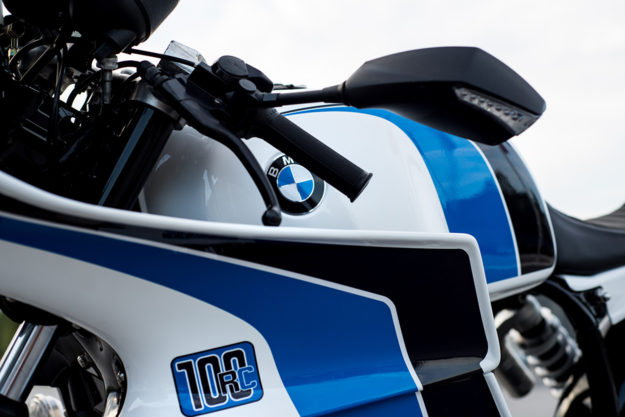
Pretty bikes that run poorly are no good, so Luka handed the engine to an expert for a solid once-over, and fitted stainless fasteners throughout. We love how he resisted the urge to slash the pipes, leaving another obvious connection to the past.
We give him top marks for his choice of livery too: a classy blue and black design layered on classic BMW Alpine White.
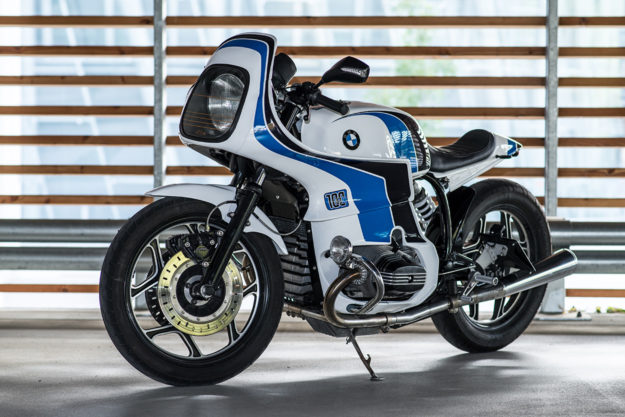
“Every time I finish building one bike,” says Luka, “my mind gets full of new ideas—so I can’t wait to start another project.”
We’re a touch impatient ourselves…
Oil Stain Garage | Images by Miha Peterlič
